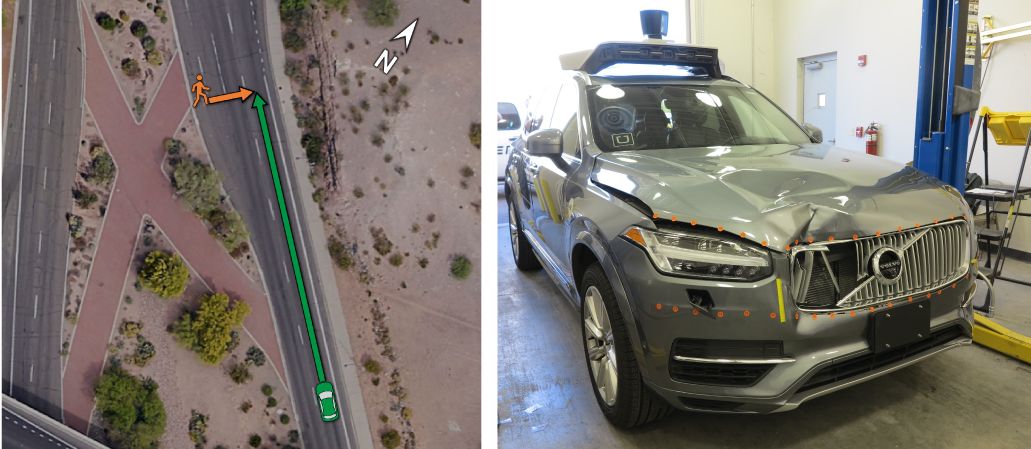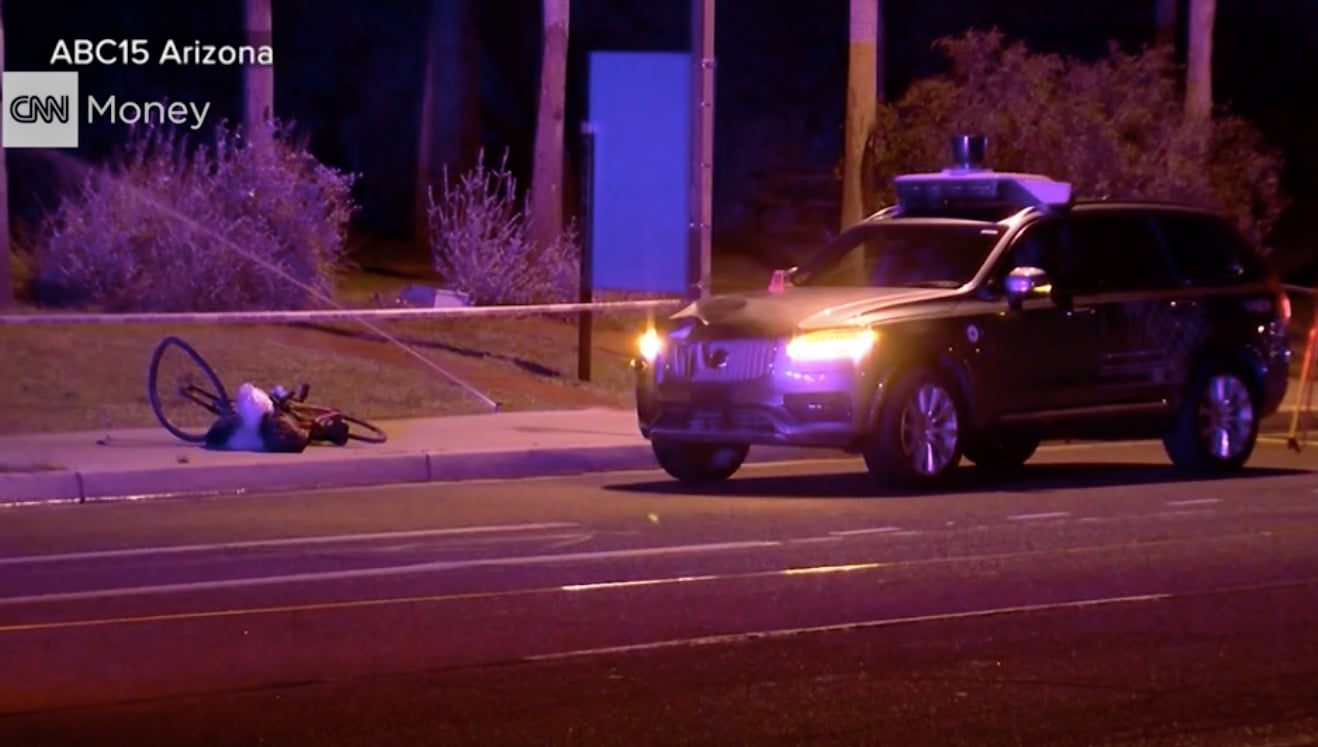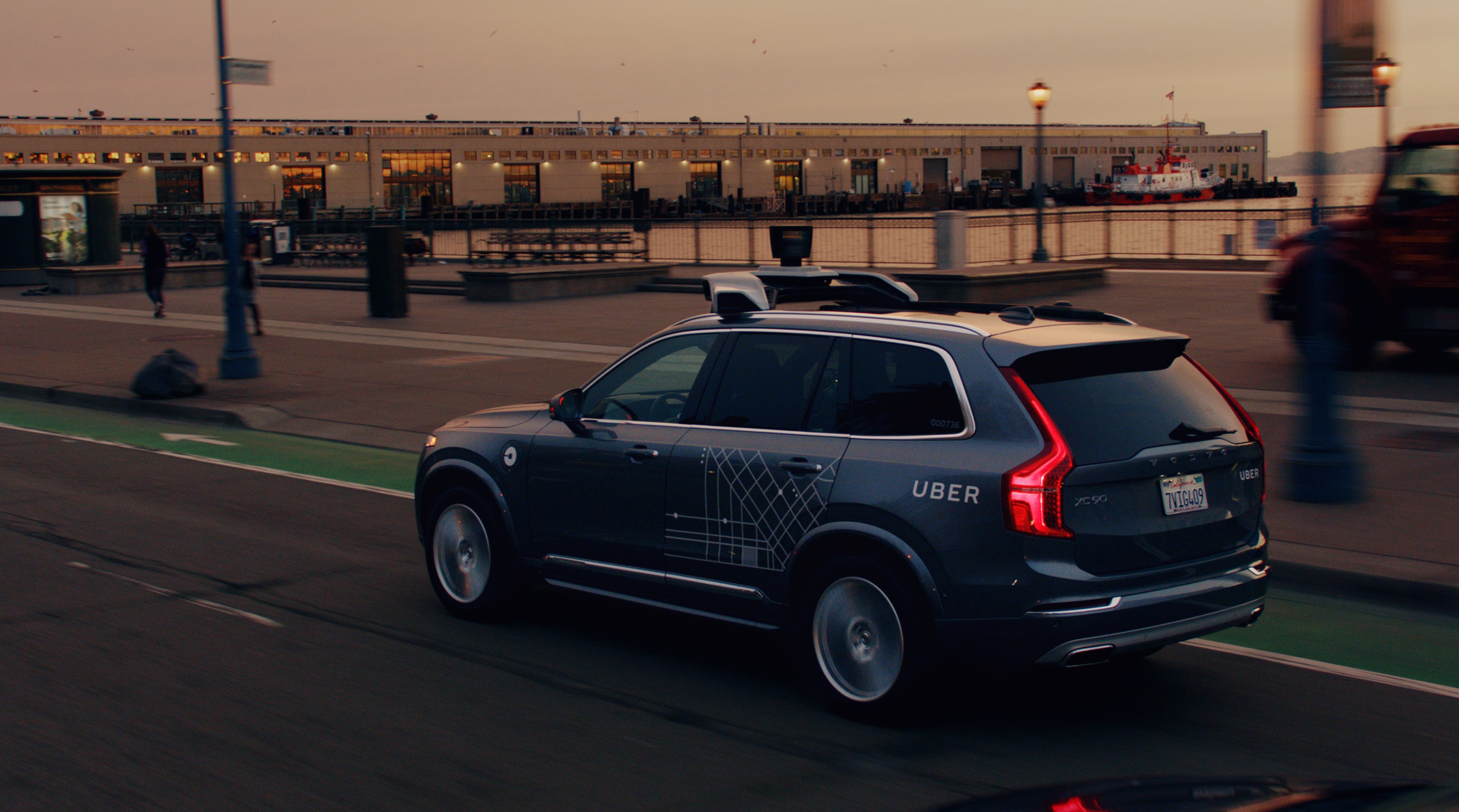The Insurance Institute of Highway Safety (IIHS) in the United States has lambasted Uber’s decision to turn off the built-in active safety systems on its Volvo XC90 autonomous driving prototype, which was involved in a fatal collision with a pedestrian in Tempe, Arizona earlier this year. The agency said that the crash could have been avoided had those systems been left on.
In May, the National Transportion Safety Board (NTSB) released a preliminary report of its investigation into the incident. In it, the authority stated that Volvo’s autonomous emergency braking and pedestrian detection system, which would be functioning at all times on a standard XC90, was turned off when the prototype was in self-driving mode. “All these Volvo functions are disabled when the test vehicle is operated in computer control but are operational when the vehicle is operated in manual control,” the report stated.
The regular XC90 aced IIHS’ front crash prevention test – earning a “Superior” rating – and while the institute has yet to rate pedestrian detection systems, it says that it has conducted extensive research tests, with the Volvo “proving extremely capable” of avoiding pedestrians in 56 km/h track tests. It also gave examples of a test performed by Euro NCAP, which gave high marks to the same system on an XC60 for its ability to completely prevent collisions with pedestrians at speeds of up to 60 km/h.
British motor insurance automotive researcher Thatcham, meanwhile, tested the system in the dark and proved that it is capable of braking for a pedestrian walking a bicycle across the vehicle’s path at night – exactly the sort of accident that occurred in Tempe on March 18. “The crash avoidance system on the XC90 would have prevented or mitigated this crash, but it was never given the opportunity to intervene or even alert the test driver,” said IIHS chief research officer David Zuby.
The NTSB report also stated that Uber’s autonomous driving system was not programmed to brake or warn the driver to intervene, even though it was capable of detecting impending conflicts. “According to Uber, emergency braking maneuvers are not enabled while the vehicle is under computer control, to reduce the potential for erratic vehicle behavior,” NTSB wrote. “The vehicle operator is relied on to intervene and take action. The system is not designed to alert the operator.”
The pedestrian, Elaine Herzberg, was struck as she was walking the bicycle across a four-lane arterial road around 10 pm. She had crossed more than three lanes before being hit by the XC90 at around 39 mph (63 km/h), all while the system was operating normally without any faults or diagnostic messages.
The report and the in-car dash cam video showed that the vehicle’s operator was not looking at the road until just before impact. The operator claimed that she was monitoring the system’s interface in the centre console at the time, and local police in Tempe reported in June that her smartphone was also streaming a TV show in the 42 minutes preceding the crash.
According to the NTSB report, the self-driving system first noticed Herzberg around six seconds before impact, first classifying her as an unknown object, then a vehicle and then as a bicycle. It “determined that an emergency braking manoeuvre was needed to mitigate a collision” 1.3 seconds before impact, but the operator did not take the wheel until less than a second before impact, braking just after the car hit Herzberg.
“What’s chilling is that the engineers behind Uber’s software program disabled the system’s ability to avoid a life-or-death scenario while testing on public roads,” Zuby said. “Uber decided to forgo a safety net in its quest to teach an unproven computer-control system how to drive.”
Programming the car to brake when Uber’s sensors first sensed something on the road would have given the system more time to identify Herzberg as a pedestrian and for her to finish crossing the road, IIHS claimed.
“At six seconds out, the automated driving system had a range of choices it could make,” Zuby said. “Just like humans might ignore something unexpected and unclear moving toward their path, Uber’s system didn’t react despite sophisticated sensors and artificial intelligence. That’s unacceptable. To be better than human drivers, automated systems have to make safer choices.”
Additionally, IIHS argued that a human driver paying attention would have been able to slow down the vehicle enough to reduce the severity of the crash. It said that in the dash cam video, the pedestrian appears around 25 m before impact, and that with a best-case driver reaction time of around one second, the vehicle would have travelled around 20 m before the driver initiated braking at around five metres.
This, said IIHS, would have reduced the SUV’s speed by roughly 10 mph (16 km/h) to an impact speed of 30 mph (48 km/h), which could have raised Herzberg’s chances of survival. In reality, the vehicle’s operator was looking down for approximately 9.5 seconds out of the video’s 12.5 seconds, which meant that during that period the vehicle covered around 230 m, the institute claimed. The driver was said to have been distracted for all of the last 5.5 seconds, or 100 m, before impact.
The institute cited experimental studies which have shown that drivers could lose track of what the autonomous driving system is doing, fail to notice when something goes wrong and have trouble retaking control. It added that some companies testing their systems required two operators in the vehicle on public roads, noting that Uber had also used two operators earlier but had recently scaled down to just one.
“Looking at the center stack takes the operator’s eyes off the road,” Zuby said. “Two operators in the vehicle might have allowed one to monitor the system computer and the other to focus on the road ahead.”
Looking to sell your car? Sell it with Carro.















Poor Volvo getting brush with bad publicity even though its not the product fault but the user.
Volvo already got bad publicity when it is associated with Proton.
Can’t get anything worse than that
Any car brands will get bad publicity if their products were bought by a person like you.
Uber tries to push the blame to VolvoCar but in the end justice is served. VolvoCar > Uber.
VolvoCar, P1, Geely, Mesidis, VolvoTrucks, Lotus > all
So, in Uber self-driving system, the vehicle operator is relied on to intervene and take action if there’s something wrong but the vehicle operator/driver in this case wasn’t paying attention on the road.
Classic case of driver distraction.
Yes the safety system is there, but it rarely intervenes. In fact, I crashed my volvo XC90 onto the road barrier this morning due to a distraction of an unexpected insect jumping onto my face. The safety system did nothing to warn me at all no sounds no brakes.
Sadly its due to the driver stupidity who switch off the safety functions.
I’ve said “rarely intervenes” get it?
I leave the safety feature on, just like the default. Besides, Why would I buy a Volvo and disable all safety features? I know my car better than you.
in your case, you claim the vehicle semi-autonomous safety features failed to perform as advertiesed. can you sue the manufacturer ? i believe the vehicle logs all movements up to the time of the crash, using gps and other sensors.
Uber can’t even doing well in their core business and try their luck with autonomous driving
IF the Insurance Institute of Highway Safety (IIHS) can proved that UBER have turn off the built-in active safety systems on its Volvo XC90 autonomous driving prototype, Volvo & IIHS/pedestrian should sue Uber till kingdom come.
when you depend on too much technology..
back to the basic.. well alerted is the best.